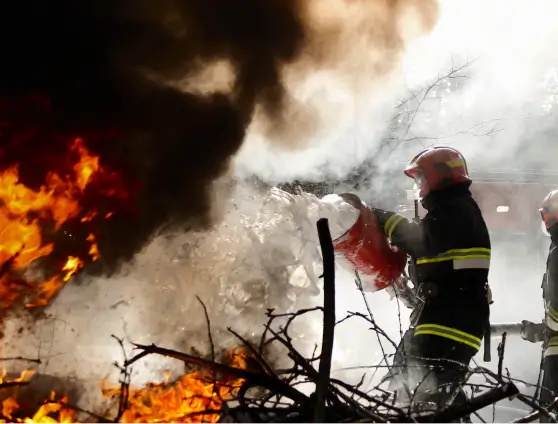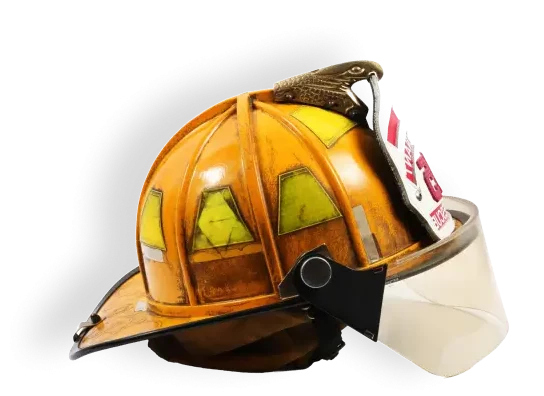YOU MAY BE ENTITLED TO MAJOR CASH COMPENSATION FROM AFFF FIRE FIGHTING FOAM MANUFACTURERS
You may qualify for compensation if you or a loved one were exposed to Firefighting Foam and were diagnosed with CANCER.
Take this 45 Second Application to See if you Qualify
FIND OUT IF YOU HAVE A CLAIM NOW
Inquiries are 100% Secure and Confidential
What is AFFF and How is it Used?
Aqueous Film-Forming Foam (AFFF) serves as a vital fire suppressant, specifically designed to combat flammable liquid fires.
It finds common application in firefighting training facilities, various vehicles, ships, shore facilities, and military installations. AFFF operates by creating a barrier that cools the fire and prevents oxygen from reaching the fuel.

Health Risks Associated with AFFF Exposure
AFFF is known to contain toxic elements, particularly perfluorooctane sulfonate (PFOS) and perfluorooctanoic acid (PFOA), which belong to the per- and polyfluoroalkyl substances (PFAS).
These chemicals can accumulate in the body over time, potentially leading to adverse health effects, including cancer. The International Agency for Research on Cancer (IARC) has classified PFOA as a 2B carcinogen, suggesting a possible link to cancer in humans.
The Connection Between AFFF and Ongoing Legal Actions
In response to health and environmental concerns, some manufacturers agreed to phase out PFOS production in the United States starting in 2002. Nevertheless, lawsuits are being filed against major chemical manufacturers concerning AFFF exposure.
Recent research has indicated potential health risks associated with AFFF exposure, establishing links to various health issues. Here are some key findings from various studies:
Environmental Science & Technology Study (2017)
National Institute for Occupational Safety and Health (NIOSH) Study (2020)
Journal of Exposure Science & Environmental Epidemiology (2019)

Despite this compelling evidence, manufacturers and distributors of AFFF continue its usage without adequately informing the public about the potential health risks associated with exposure.
Despite this compelling evidence, manufacturers and distributors of AFFF continue its usage without adequately informing the public about the potential health risks associated with exposure.
These toxic ‘forever chemicals’ weaken the immune system, affect communication between body cells, induce inflammation, and accelerate cell proliferation”.
As a result, numerous lawsuits have been filed against the manufacturers and distributors of AFFF, such as 3M, Tyco, DuPont, and others.
“These toxic ‘forever chemicals’ weaken the immune system, affect communication between body cells, induce inflammation, and accelerate cell proliferation”.
As a result, numerous lawsuits have been filed against the manufacturers and distributors of AFFF, such as 3M, Tyco, DuPont, and others.”


The health effects of Aqueous Film-Forming Foam (AFFF) exposure can vary,
but some common effects include:
- Kidney Cancer
- Pancreatic cancer
- Testicular cancer
- Prostate cancer
- Non-Hodgkin's lymphoma
- Bladder cancer
- Thyroid cancer
- Liver cancer
- Liver Disease
- Ulcerative colitis
These lawsuits seek compensation for damages resulting from exposure to AFFF, covering:
These lawsuits seek compensation for damages resulting from exposure to AFFF, covering:
- Medical Bills
- On Going Life Care
- Pain & Suffering
- Loss of Wages or Income
- Other Losses
In a significant development, 3M Company confirmed a massive firefighting foam settlement, resulting in payments of up to $12.5 billion to cities and communities nationwide.
This settlement aims to address claims that toxic per- and polyfluoroalkyl substances (PFAS) contaminated water systems nationwide after use during firefighter training and response exercises.


Who is at Risk?
Who is at Risk?
Firefighters
Firefighters use AFFF to extinguish fires that are difficult to fight with water alone. However, long-term exposure to the chemicals in AFFF increases the risk of cancer.
Airport Personnel
Airport personnel are constantly exposed to AFFF for training and emergencies. This exposure can lead to serious health conditions over time.
Military Personnel
The Department of Defense began using AFFF to fight fuel fires in the 1970s. This has led to PFAS contamination of groundwater on military bases, posing a risk to military personnel.
Property Owners
Property owners near areas where AFFF is used may be at risk. Contamination from PFAS can seep into groundwater, potentially affecting off-base water supplies.
Residents
Residents living near areas where AFFF is used may be exposed to PFAS through contaminated groundwater. Long-term exposure can lead to serious health problems.
Firefighters
Firefighters use AFFF to extinguish fires that are difficult to fight with water alone. However, long-term exposure to the chemicals in AFFF increases the risk of cancer.
Airport Personnel
Airport personnel are constantly exposed to AFFF for training and emergencies. This exposure can lead to serious health conditions over time.
Military Personnel
The Department of Defense began using AFFF to fight fuel fires in the 1970s. This has led to PFAS contamination of groundwater on military bases, posing a risk to military personnel.
Property Owners
Property owners near areas where AFFF is used may be at risk. Contamination from PFAS can seep into groundwater, potentially affecting off-base water supplies.
Residents
Residents living near areas where AFFF is used may be exposed to PFAS through contaminated groundwater. Long-term exposure can lead to serious health problems.
Eligibility for Filing a AFFF Lawsuit
- You or a loved one worked as a firefighter
- You were exposed to PFAS-containing firefighting foam on the job or during training
- You developed any of the following types of cancer: pancreatic, bladder, breast, colon, kidney, leukemia, liver, lymphoma, testicular, thyroid, or prostate cancer
- You have occupational exposure to AFFF (firefighting foam) for at least 1 year
- Potential firefighting foam exposure victims include airport and military firefighters, as well as local first responders and those living near areas where AFFF foam was used
Money cannot fix the diagnosis, but holding the people responsible is a must.

Money cannot fix the diagnosis, but holding the people responsible is a must.
